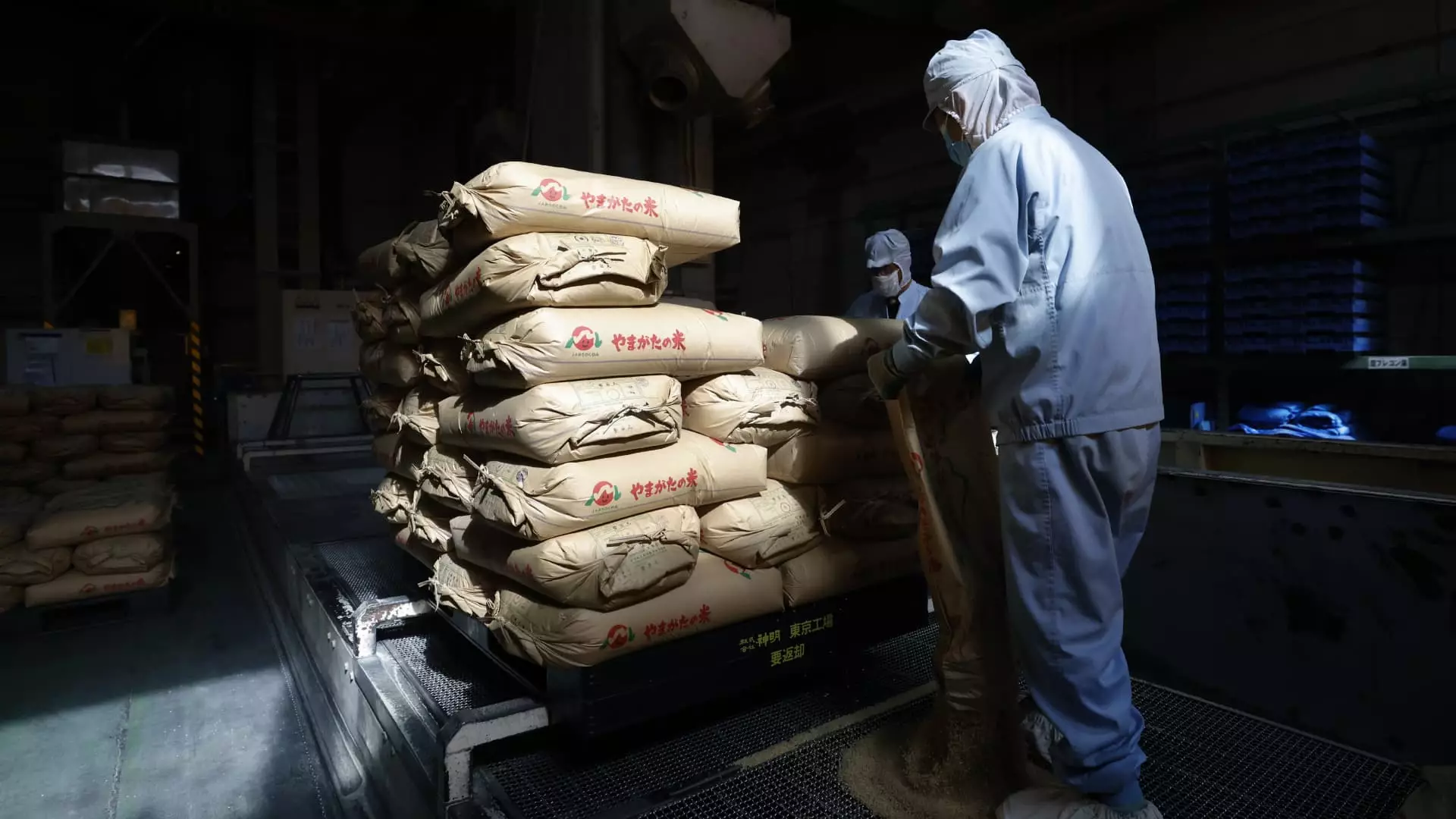In May, Japan witnessed an unprecedented surge in rice prices—a staggering 101.7% increase compared to the previous year—marking the largest price leap in over fifty years. This alarming trend follows a similarly steep rise of 98.4% in April and a comtentious 92.1% in March, leaving consumers reeling and policymakers scrambling for solutions. The rice surge is not merely a statistical anomaly; it is a symptom of a much larger economic ailment plaguing Japan. With rice being emblematic of Japanese cuisine and culture, its escalating prices evoke not just an economic concern, but an existential one.
The Japanese government has resorted to releasing emergency stockpiles of rice in a desperate attempt to curb this escalating crisis. While these short-term measures may offer a temporary reprieve, they shed light on a critical failure to address the underlying causes of this price spike. The reliance on emergency stockpiles reveals a systemic vulnerability; Japan must grapple with the factors that cause such volatility in staple food prices if it hopes to ensure food security in the future.
The Inflationary Spiral
The surge in rice prices comes at a time when Japan’s overall inflation rate has climbed to 3.7%—its highest level since January 2023—thus intensifying the financial strain on households. Surprisingly, this inflation figure surpassed the expectations set by economists, who anticipated a reading of 3.6%. Such persistent inflation, now recorded for the 38th consecutive month, signals a troubling disregard for consumer purchasing power. It also amplifies concerns over the Bank of Japan’s (BOJ) effectiveness in managing monetary policy.
The BOJ’s fixation on a 2% inflation target is increasingly disconnected from the realities faced by everyday consumers. The central bank has held interest rates at a meager 0.5%, attempting to stimulate spending and economic growth. However, the mere act of keeping rates low feels like a band-aid solution that does not address the broader economic stagnation or the external shocks affecting commodity prices. When food constitutes such a substantial part of core inflation—as much as approximately 50%, according to experts—the need for adaptive monetary measures cannot be overstated.
The Hidden Costs of Inaction
Despite the dramatic increases in food prices, including rice, the government’s legislative inertia poses serious questions about its capability to enact meaningful reforms. Although experts suggest that reduced prices for rice might lead to increased household spending, thus injecting vitality into the economy, the reality is contingent upon whether these reductions can bridge to processed foods and restaurant prices. Without proactive measures to ensure price stability in these areas, the economic landscape remains precarious.
As central banks globally grapple with rising inflation, Japan’s predicament is uniquely daunting. The geopolitical tensions in the Middle East add another layer of complexity, potentially influencing energy costs, which further complicates Japan’s economic recovery. Economists now argue that addressing these pronounced tensions and their impact on energy prices is crucial in the battle against inflation; however, Japan’s government appears remarkably unprepared to adjust its strategies effectively.
The Need for Comprehensive Solutions
Central to Japan’s struggle is a reluctance to adapt its agricultural policies. The nation’s reliance on imports combined with fluctuating global market conditions exacerbates the food pricing crisis. Japan must do more than simply manage its emergency stockpiles of rice; it needs transformative agricultural reforms to stabilize production and ensure food supply against unpredictable global trends.
Moreover, these challenges are occurring at a time when the country’s GDP has shrank by 0.2% in the quarter ending March. As exports decline, many fear that this economic contraction may set a worrying precedent for the future. The deceleration in economic growth intensifies calls for reform—a manifesto for change that has never been more urgent.
In summation, Japan’s soaring rice prices embody a crisis that transcends mere inflation; they reflect fundamental issues that demand immediate and sustained attention. As citizens watch their costs rise, the government’s ability to respond quickly and effectively will be crucial for the nation’s economic future. If Japan is to emerge from this crisis, it must confront the multi-faceted challenges head-on with tangible, impactful reforms rather than relying on temporary fixes.


Leave a Reply